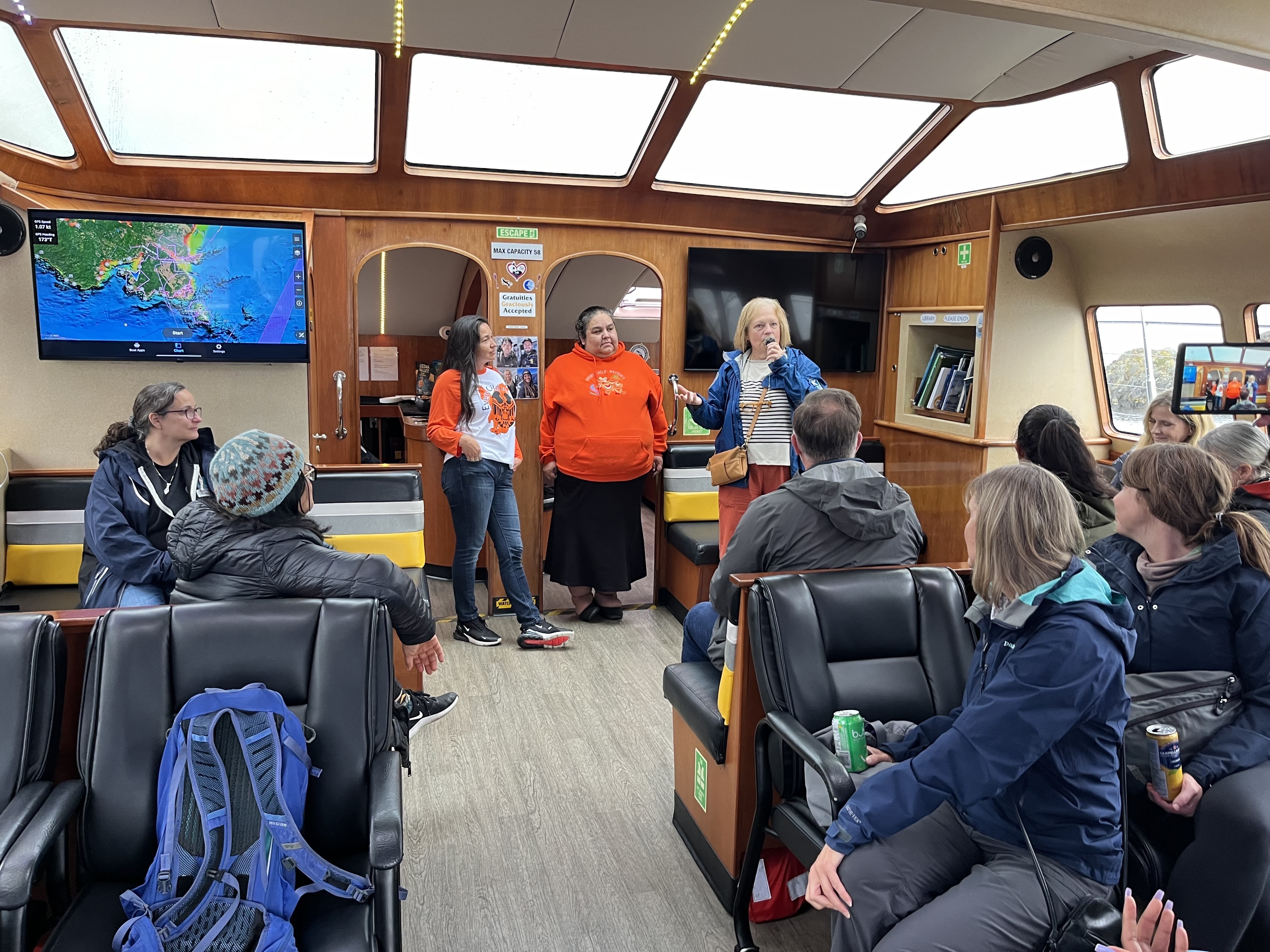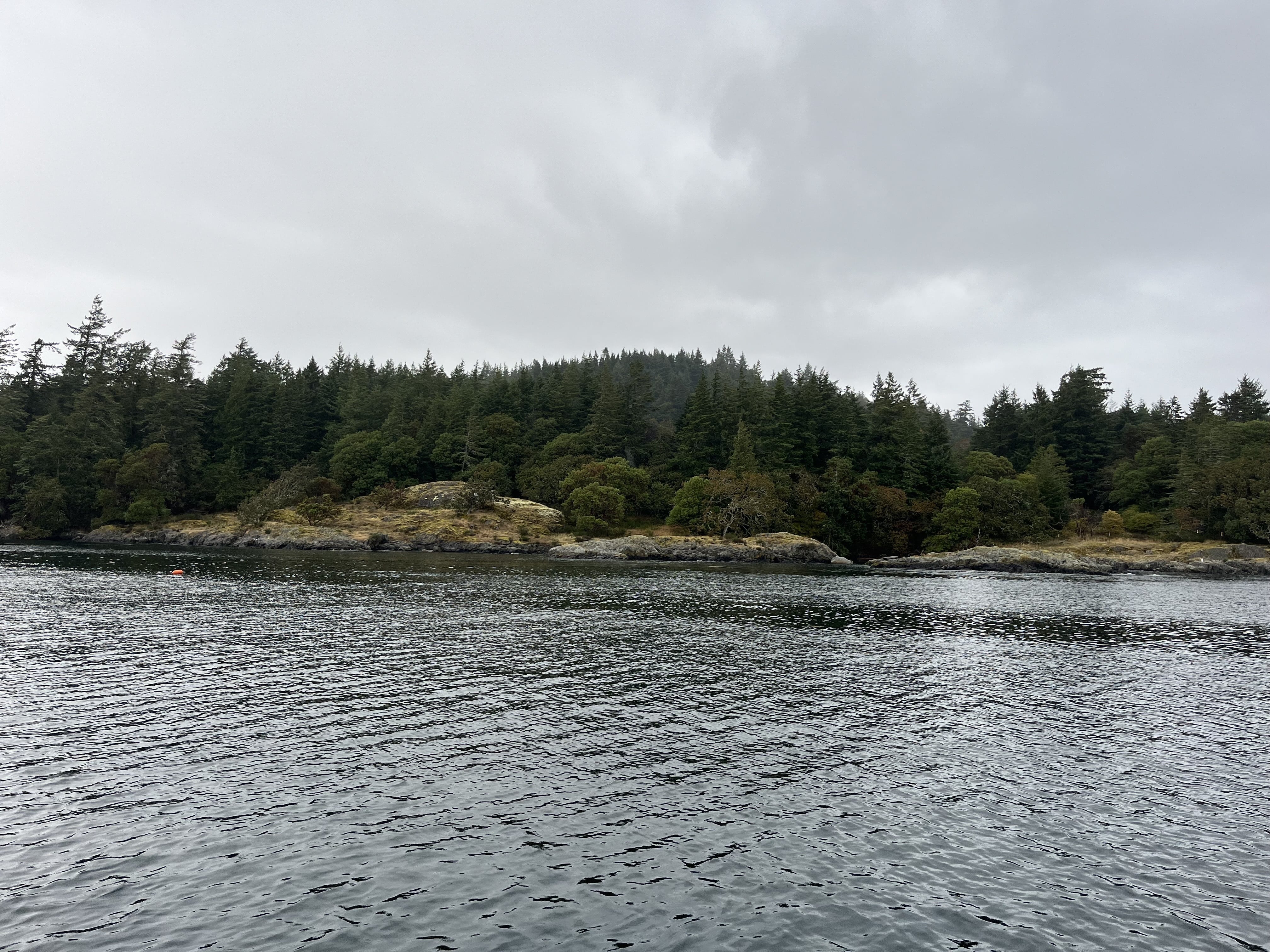
Mary Hill is directly adjacent to Pearson College and spans 176 hectares in Metchosin BC, near Victoria. This area represents an astonishing 15% of the world’s remaining unprotected old growth of the Coastal Douglas Fir.
The Coastal Douglas-fir biogeoclimatic zone is the smallest and most at-risk zone in British Columbia. Only 9% has been protected, with the rest having been logged, developed, or otherwise altered.
Protecting this rare and at-risk area also means reconnecting with it.
The land was held by the Department of National Defence [DND] for over 90 years, with no public access, and without agreement from SC'IȺNEW̱ First Nations.
"The lands of [Mary Hill]...have not been accessible to our people in very long time,” Traci Pateman, councillor for SC'IȺNEW̱ First Nations explains.
“DND Rocky Point was built mid 1950's,” she goes on to say, “[but] some of these lands we have not had access to in 175 years.”
Since she began her term as councillor in 2019, Traci has been an active part of negotiating the return of these lands to SC'IȺNEW̱ First Nation under the BC Treaty Process.
It has been a long road, but the SC'IȺNEW̱ First Nation have never given up and are now in the final stage of negotiation. Traci is passionate about the opportunity to conserve and reconnect, saying, “stand up for what belongs to your people. Speak up for what is right even if your voice shakes while you do it!”

Based on their traditional values, SC'IȺNEW̱ has agreed that it will consider foregoing development of these lands in favour of a Tribal Park provided that the community’s overarching social and economic interests and priorities can be sustained.
“The areas around the tribal park are diverse,” Traci explains. “We want to make sure that we do our part to protect this land. Not only for us. We do this to honour our Ancestors and for all the generations to follow.”
Because of their shared values, Habitat Acquisition Trust (HAT), a local conservation organization, has partnered with SC'IȺNEW̱ First Nation to help support the creation of the Tribal Park.
"While our original mission focuses on supporting the preservation and protection of nature, we are evolving,” Kevin Smith, Executive Director of HAT explains. “We recognize that our conservation and ecological goals go hand in hand with supporting Indigenous leadership and stewardship."
"These projects aren't just mission-aligned; they are an opportunity for us to grow, learn, and redefine how we support our partners," says Kevin.
The most critical part of this collaboration has been building trust between HAT and the SC'IȺNEW̱ First Nation community.

Both Kevin and Peter Ord, SC'IȺNEW̱ Tribal Park Manager for HAT, have long histories of working with Indigenous communities. They are passionate about creating pathways for sustainable long-term solutions, while also building trust.
“Rushing forward to meet arbitrary deadlines is not the best practice,” says Peter. “When working with First Nations, partners need to work at the speed of trust, which takes time.”
“Getting that positive response from the community, is really, really critical.”
This has meant prioritizing in-person meetings, implementing feedback, and taking opportunities for relationship building that are sometimes unexpected.
Peter offered an example when he and Kevin asked how they could assist the Nation with their Tribal Journeys event last July. One of the organisers said being available to just help clean-up and pick up garbage would be useful.
“And we did…and it felt really good. It was great to support them…[it] didn’t mean we were working directly towards establishing the Tribal Park. It [was] really about creating the relationship.”

Tribal Journeys are an annual gathering of Indigenous communities who canoe their ancestral waterways together, converging each year on a different host community.
These canoe journeys are one example of many traditional ceremonies and traditions that connect communities both together and to the land.
“The most rewarding part is witnessing the events on the land—seeing the youth, community members, and elders immediately connect with an area they had been excluded from for so long. The excitement, the sparkle in their eyes, and the sharing of knowledge and wisdom is incredible,” says Kevin.
“That sense of reconnection—and seeing the future of the landscape through the eyes of the youth playing there—is our motivation. It’s why we put in the long hours, write the reports, and do all the other work: to support those moments.”
Pearson College is also a partner in the proposed Tribal Park, contributing 14 hectares of its environmentally significant land to the project as part of its reconciliation commitment with SC'IȺNEW̱ First Nations.
-min.jpg)
These partnerships are an example of just how united communities across BC are when it comes to conservation, and provides inspiration for similar partnerships.
“We are stewards of this land,” Traci says when asked what she would share with other communities who are on a similar journey to create a Tribal Park or Indigenous Protected Area.
“We have been here [since] time immemorial. We will continue.”
“If you want to begin this kind [of] work, partners are out there. You think you're alone. I guarantee you, if you look, you can find people like HAT, who care, and will step up to the plate, work beside you, walk with you.”
“You might think you're alone, and it's a long, hard battle, but bringing your people there will make it all worth it.”
The BC Conservation Fund has invested in the SC’IȺNEW̱ Tribal Park as a priority biodiverse area on Southern Vancouver Island with 178 hectares of old-growth forest, primarily Coastal Douglas-fir, a rare and endangered ecosystem in BC. This project is an inspiring partnership between the SC’IȺNEW̱ First Nation and Habitat Acquisition Trust which exemplifies the impact of working together to conserve nature and reconnect community.